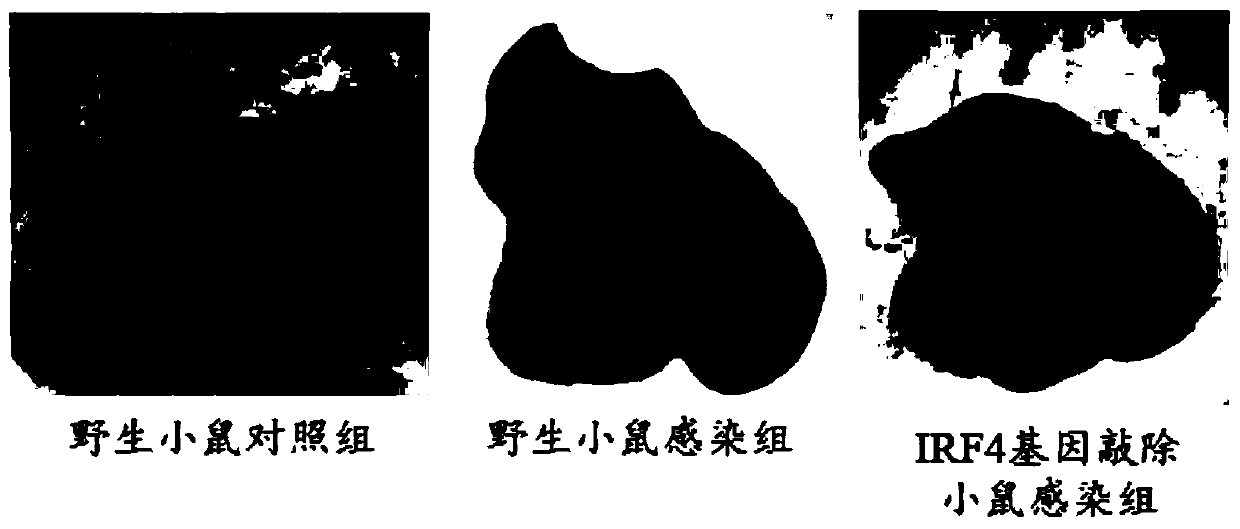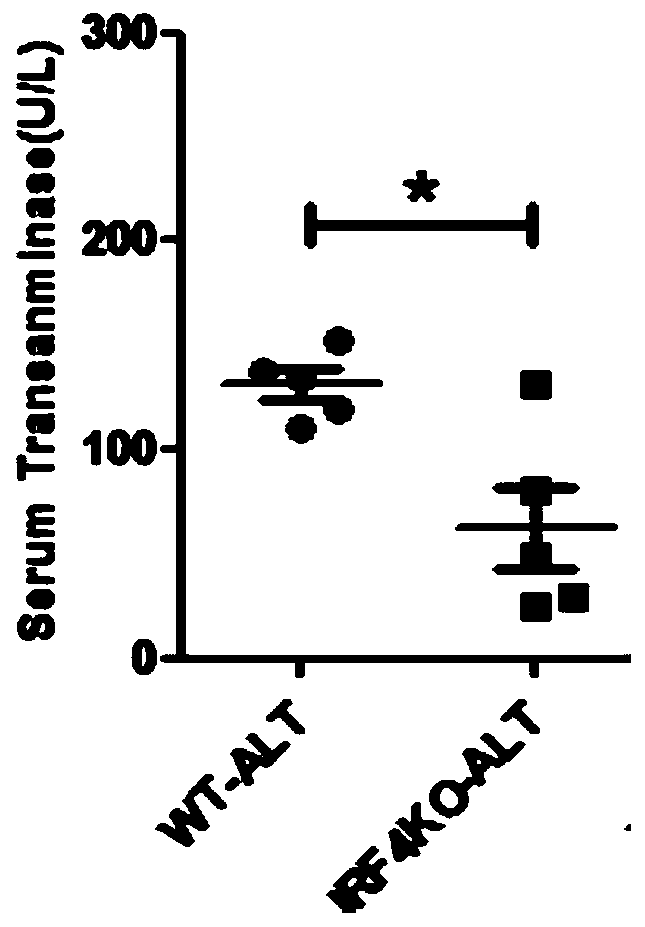Application of IRF4 gene in resisting schistosoma infection
An anti-schistosomiasis and gene technology, applied in the field of biomedicine, can solve the problem of few types of drugs for schistosomiasis infection, achieve great medicinal prospects and value, inhibit the formation of liver granulomas, and relieve symptoms.
- Summary
- Abstract
- Description
- Claims
- Application Information
AI Technical Summary
Problems solved by technology
Method used
Image
Examples
Embodiment 1
[0023] Embodiment 1 establishes the model mouse of schistosomiasis infection
[0024] The IRF4 knockout mouse infection group, the wild mouse infection group and the wild mouse control group (not infected with schistosome) were set up, with 5 mice in each group. Selection criteria for mice in each group: female, 6-8 weeks old, weighing about 20 g. Wherein, the mice in the wild mouse infection group and the wild mouse control group are of the same strain as the IRF4 gene knockout mice.
[0025] 1. Place Schistosoma japonicum-positive snails in dechlorinated water at 20-25°C under light to escape cercariae;
[0026] 2. Take mice from each group, and each mouse is infected with 40 cercariae of Schistosoma japonicum through abdominal skin;
[0027] 3. The schistosomiasis model mice can be obtained after 6 weeks of infection.
Embodiment 2
[0028] Embodiment 2 result detection
[0029] One of the main symptoms of schistosomiasis is hepatic granuloma and abnormal liver function. In this example, the role of IRF4 gene deletion in resisting schistosomiasis infection was evaluated by detecting the granuloma formation in the liver of each group of mice successfully modeled in Example 1 and the ALT level in the mouse serum.
[0030] 1. Granuloma formation in the liver of mice: 6 weeks after the mice in each group were infected with Schistosoma japonicum, the mice were taken out, bled through eyeballs, blood was collected by anticoagulant tubes, and then the mice were killed by cervical dislocation. The livers of the mice in each group were dissected, observed and photographed, and the results were as follows: figure 1 shown. Depend on figure 1 It can be seen that compared with the wild mouse control group, the livers of the wild mouse infection group and the IRF4 gene knockout mouse infection group all formed granul...
PUM
 Login to View More
Login to View More Abstract
Description
Claims
Application Information
 Login to View More
Login to View More - R&D Engineer
- R&D Manager
- IP Professional
- Industry Leading Data Capabilities
- Powerful AI technology
- Patent DNA Extraction
Browse by: Latest US Patents, China's latest patents, Technical Efficacy Thesaurus, Application Domain, Technology Topic, Popular Technical Reports.
© 2024 PatSnap. All rights reserved.Legal|Privacy policy|Modern Slavery Act Transparency Statement|Sitemap|About US| Contact US: help@patsnap.com









